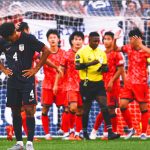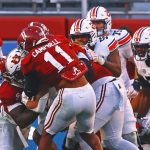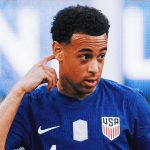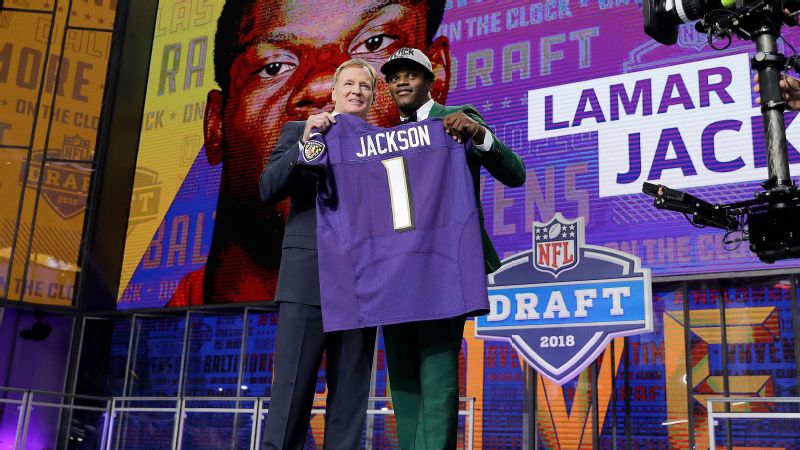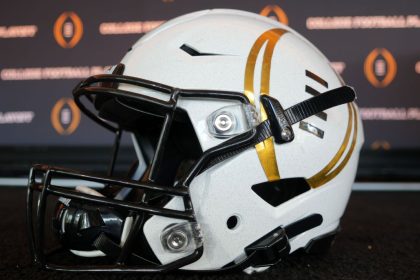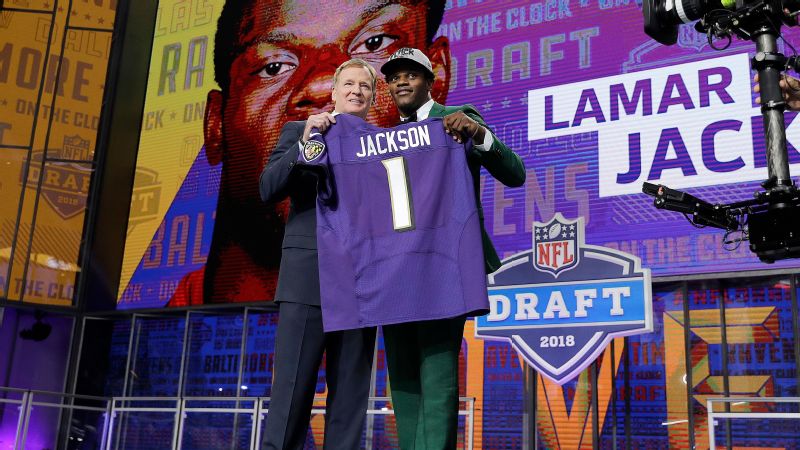
OWINGS MILLS, Md. — Six years ago, the Baltimore Ravens pulled off one of the best moves of their draft history: The team made a draft-night trade with the Philadelphia Eagles and jumped up from the second round to take Lamar Jackson with the No. 32 pick.
Even though no team has traded up into the first round to take a quarterback since then, the Ravens could help another team make a Jackson-like draft move this year. With quarterbacks Michael Penix Jr. and Bo Nix likely available near the bottom of the first round, the Ravens could be in position to benefit from a team seeking a franchise quarterback like Baltimore did in 2018.
This has the potential to be a win-win scenario. Baltimore, which has the No. 30 overall pick, might be open to acquiring more picks because it needs to build through the draft after giving a big-money deal to Jackson. Then, there are the teams like the Las Vegas Raiders (No. 44 pick), New York Giants (No. 47) and Los Angeles Rams (No. 52), who could covet a young quarterback and might want to leap into the bottom of the first round to get their targeted passer.
The Ravens understand the incentive of getting a quarterback in the first round instead of the second is gaining that fifth-year option, which allows the team to have additional season of contractual control over the player.
“All things being equal, if you trade out of the first round, I think that you should get a premium if you’re going to do that to give up that additional year,” DeCosta said at the team’s pre-draft press conference.
The expectation is the top three quarterbacks in this year’s draft — USC’s Caleb Williams, LSU’s Jayden Daniels and North Carolina’s Drake Maye — will go in the first three picks. Michigan’s J.J. McCarthy, the consensus No. 4 quarterback prospect, could get selected in the top five.
There is a drop-off at the position after that, but there’s a chance that six quarterbacks get taken in the first round, tying the NFL record set back in 1983. Nix was selected as high as No. 12 in ESPN’s Mike Tannenbaum‘s mock draft, and ESPN’s Mel Kiper Jr. said Penix is a “first-round caliber quarterback” if a team is comfortable with his past knee and shoulder injuries.
If Penix and Nix are available late in the first round, it doesn’t mean that a team will move up for them. Last year, quarterback Will Levis fell out of the first round and to the Tennessee Titans at the second pick of the second round. ESPN insider Field Yates and Kiper’s latest mock draft have both quarterbacks as early second-rounders.
But, if a team wants to trade up for Penix or Nix, it would likely cost an additional pick this year and another one in next year’s draft. When the Ravens moved up 20 spots to get Jackson in 2018, Baltimore sent three picks to the Eagles — a second-rounder (No. 52 overall) and fourth-rounder (No. 125) in 2018 and a 2019 second-round pick — in exchange for the Eagles’ first-round pick (No. 32) and fourth-rounder (No. 132) in 2018.
The Ravens have continually used the drafts as their primary source to improve their team, but there’s an increased emphasis since signing Jackson to a five-year, $260 million deal last year. DeCosta has pointed out how Baltimore will have limited salary cap space to spend in free agency.
After losing 15 players this offseason, Baltimore has work to do to fill out their 90-player roster. According to Spotrac, the Ravens have 59 players under contract, the second-fewest in the NFL.
The Ravens currently have nine picks in this year’s draft, including five in the first four rounds. But, as DeCosta mentioned, it’s more than accumulating selections.
“You could have 15 picks, and sometimes you’re there at the end of the draft, and you’re looking at the [draft] board, and you have no idea who you want to pick,” DeCosta said. “You just don’t see anybody that you really covet. I always think about it as, ‘What picks do you need to get the players that you want to take?’ You can have some great picks, but if the board doesn’t fall the right way, and you’re looking at a bunch of players that aren’t any better than the players you have on your roster, those picks don’t really help you very much.
“I like the idea of having more picks, but I want to have more picks in a specific range in the draft. If we can get that done, then I could see us being in a good position to really maximize our chances to find good players.”
DeCosta’s belief is, the more picks you have, the better chance you have on hitting on quality players. The Ravens’ 91 picks over the last 10 drafts are tied for the fourth-most in that span, according to ESPN Stats & Information. Baltimore has used that high number of selections to draft 14 Pro Bowl players since 2014, the third-most in the league. The Ravens trail the Detroit Lions (16) and Dallas Cowboys (15).
“We see this year’s draft and next year’s draft as real opportunities for us to begin build that depth up again,” DeCosta said.



